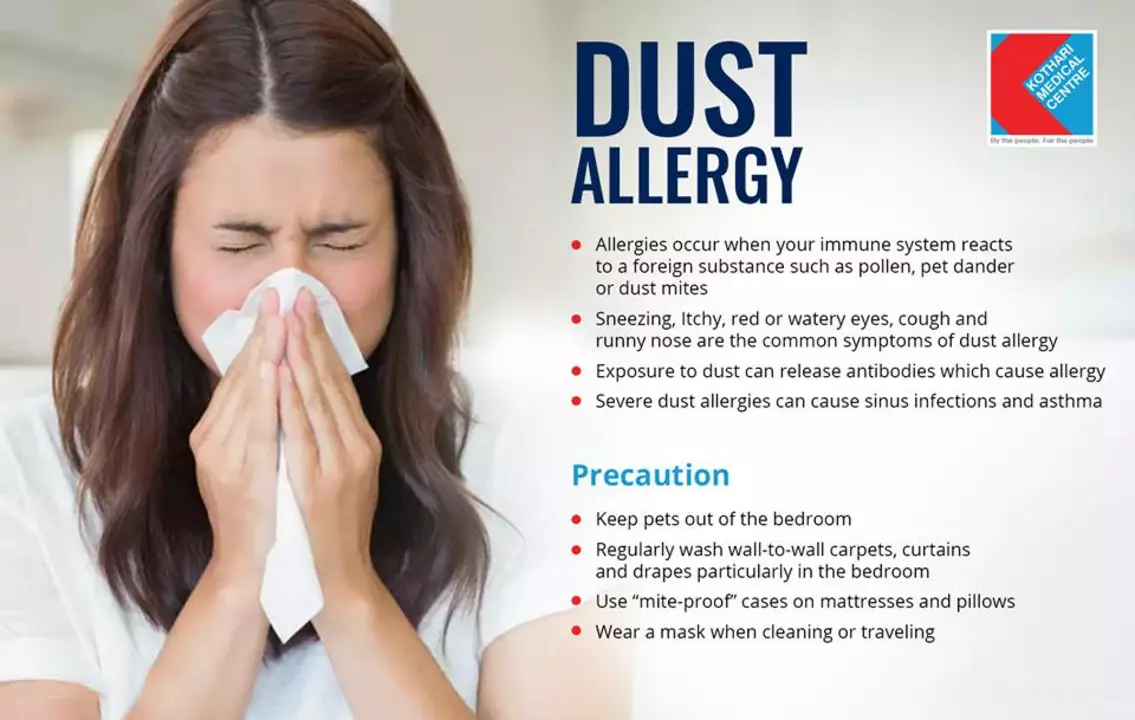FDA Facility Inspections: How the Agency Ensures Quality in Manufacturing
December 3 2025Allergic disorders — practical steps to spot triggers and feel better fast
Allergic disorders affect a lot of people and can quietly wreck your day. If you get sneezes, itchy eyes, rashes, wheeze, or tummy trouble after certain foods or environments, that’s an allergy. This page gives straightforward steps to find triggers, ease symptoms at home, and know when to get medical help.
Start small: keep a short diary for two weeks. Note what you eat, where you go, and when symptoms appear. Patterns show up fast — pet-related problems often hit at home, pollen flares in certain seasons, and food reactions usually follow a meal within minutes to a couple hours. Track timing, location, and what made symptoms better or worse.
How common allergic disorders show up
Allergic rhinitis (hay fever) causes sneezing, runny or blocked nose, and itchy eyes. Eczema shows as dry, red, itchy skin patches that often worsen with sweat or certain soaps. Food allergies can cause hives, vomiting, stomach pain, or in severe cases, anaphylaxis — sudden breathing problems, throat tightness, or collapse. Allergic asthma brings wheeze, chest tightness, and coughing, often at night or during exercise.
Don’t ignore subtle signs: ongoing sinus pressure, recurring ear infections, poor sleep from coughing, or persistent fatigue can all tie back to allergies. If symptoms come and go with seasons or exposures, think allergy testing.
Practical treatments and everyday tips
Simple changes help a lot. Reduce exposure: keep windows closed on high pollen days, shower after being outside, wash bedding weekly in hot water, and use a HEPA filter if dust or pet dander is an issue. For skin, switch to fragrance-free cleansers and use emollients regularly.
Over-the-counter antihistamines ease sneezing, itching, and hives. Nasal steroid sprays are the go-to for persistent nasal symptoms; they take a few days to work but are very effective. Topical steroid creams help eczema flares but use them as your doctor advises.
If you have food allergies, strict avoidance is the only reliable method. Carry an epinephrine auto-injector if you’ve had a severe reaction and make sure family, friends, or coworkers know how to use it. For asthma, follow a written action plan: use your reliever for attacks and a controller inhaler daily if prescribed.
Consider allergy testing (skin prick or blood tests) when triggers aren’t clear or meds don’t help. For long-term relief, allergen immunotherapy — either injections or under-the-tongue tablets — can reduce sensitivity over months to years.
When to seek urgent care: if breathing gets hard, lips or throat swell, or you feel faint, use epinephrine if available and call emergency services. For ongoing issues that disrupt sleep, work, or school, book an appointment with an allergist for a clear, individualized plan.
Buying meds online? Choose licensed pharmacies and check reviews. Cheap without credentials can be risky. Small steps—tracking, exposure control, correct meds, and testing—usually cut symptoms and help you get back to normal life.
 12 May
12 May
Tips for Managing Allergic Disorders in College
Managing allergic disorders in college can be challenging, but with a few helpful tips, it becomes more manageable. First, always make sure to carry necessary medications and inform close friends and medical staff about your allergies. Second, maintain a clean living space to reduce allergens. Third, pay close attention to your diet and avoid known allergens in the dining hall. Lastly, don't hesitate to seek medical help if you experience severe allergic reactions. With these tips in mind, you can better manage allergies and enjoy a healthier college experience.
Read More...




